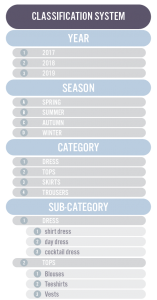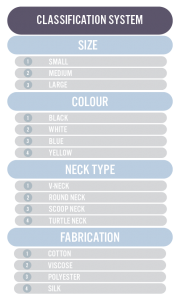A well-researched, planned and executed range plan plays a significant role in whether your business thrives.The ability of the Fashion Buyer to understand the category, the competition and how and why consumers shop is part of the key to success in retail. You always want to give more to the customer than what they are expecting and definitely stay ahead of your competition. With the growth of online retail it is just as relevant and important to have protocols in place to manage your business effectively.
A range plan can be prepared with pen and paper but i would recommend using a spreadsheet format such as MS excel in order to manage the data effectively and keep the information updated. It also makes it easier to analyse and compare essential information.
The range plan uses a classification system typically consisting of alpha and numeric codes that provide identity to products. This format is used to develop a unique style number or SKU for each item in a range. Each style is then classified into specific categories and even sub categories. It provides structure for clarity and to avoid unplanned duplication in a seasonal range.
Merchandise classification plans are used by retail businesses to uniquely identify each of their products. The information requires a level of detail to distinguish items from each other. for example a top level category such as knitwear can then have sub categories such as sweaters , cardigans etc…these may be further classified according to groups of similar identifiers – sleeve length ,fibre , detail etc… Alternatively a single style may have three colour combinations that should be uniquely identified.
Here is an example of a classification plan

This show the hierarchy starting with the year and the season followed by the category and sub category – this can also be called class and sub class or group and sub group.
Additional classifications can be added – these can be any attributes which are relevant to your business. Some examples can include size , colour , detail , fabrication etc…

Some range plans may include visuals of each of the products but as long as you have the data and the samples of each you can work with it just a well. Apart from the product classification tables there will be product descriptions included along with financial information such as the cost price and retail prices of the items. I will cover the pricing methodology in a separate post.Total units per style and colour should also be included. country of origin, manufacturers name and the intake or delivery date are also helpful.
Whether you run a small boutique or a chain of stores a classification system is beneficial for understanding the sales figures and to use for future seasonal planning.




